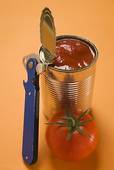 ...and 9 Tips to Minimize Your Exposure to these Harmful Chemicals
...and 9 Tips to Minimize Your Exposure to these Harmful Chemicalsby Mike Geary - Certified Personal Trainer, Certified Nutrition Specialist
Author of best-sellers: The Truth About Six Pack Abs & The Top 101 Foods that FIGHT Aging
You may have started hearing in the news about some of the hidden chemicals that might be lurking in your canned foods and bottled water
 and other drinks. Some of them are known as xenoestrogens, which have
the potential to cause serious health problems over time, as well as
increase abdominal fat from the estrogenic effect.
and other drinks. Some of them are known as xenoestrogens, which have
the potential to cause serious health problems over time, as well as
increase abdominal fat from the estrogenic effect.Today, I want to share with you some important details about one of the MOST problematic chemicals that you're being exposed to specifically from canned foods and bottled drinks, etc...
It's called Bisphenol A (BPA).
BPA can be found as a component of some types of plastic bottles, and also in the lining inside of canned foods.
Since BPA is a known "xenoestrogen", it's been linked in animal studies (at surprisingly small doses) to all sorts of various health issues such as cancer, metabolic disorders, heart disease, diabetes, and fertility problems and birth defects or miscarriages... and of course, any xenoestrogens in large enough amounts can trigger your body to hold onto abdominal fat (aka - stubborn belly fat).
The major offenders to look for are polycarbonate bottles (some plastics with the #7 symbol on the bottom are polycarbonate, but not all) and also canned foods, since the lining of most canned foods contains BPA, which can leach into food. The longer that a can of food sits on a shelf and the higher the temperature, the more BPA can leach into your food. The same can be said for polycarbonate bottles that contain food or drinks.
According to the Environmental Working Group (EWG), BPA was detected in the bodies of 95% of Americans in one CDC study (this is a worldwide issue though, not just limited to the US). This is nothing to shrug off either... look at this scary finding...
The Environmental Working Group reports, "analysis of our tests reveals that for one of every five cans tested, and for one-third of all vegetables and pastas (ravioli and noodles with tomato sauce), a single serving would expose a pregnant woman to BPA at levels that fall within a factor of 5 of doses linked to birth defects — permanent damage of developing male reproductive organs".
If that didn't get your attention, how about this...
The EWG also reports evidence of... "An investigation demonstrating that low doses of BPA spur both the formation and growth of fat cells, the two factors that drive obesity in humans (Masumo et al. 2002)."
This is not surprising, since as I mentioned at the beginning of this article, BPA is a known xenoestrogen, and any xenoestrogens can contribute to what's been referred to as "stubborn abdominal fat" as well as cancer and other health problems.
It's also important to note that any canned tomato products (canned ravioli, pastas, canned tomato pastes, tomato sauces, etc) are some of the biggest offenders with the highest BPA concentrations due to the acidic nature of tomatoes, which leaches more of the BPA.
So what steps can you take to minimize your exposure to BPA and it's negative effects on bodyfat and other health risks?
1. Try to always avoid canned foods as much as possible and choose frozen or fresh foods instead. Buy the ingredients yourself and prepare the meal the old fashioned way instead of resorting to canned foods. Also, a better alternative to canned foods is products in glass containers.
2. If you do resort to using canned foods instead of fresh foods, try to find labels that say that the cans are free of BPA.
3. If you need tomato products, always avoid canned varieties and search for tomato sauces, pastes, etc in glass bottles instead (unless the can specifically states that it is BPA-free). Or just make your own tomato dishes from scratch with fresh tomatoes.
4. If you use plastic wrap, plastic ziplock bags, plastic containers for food storage, etc, try to investigate on the label if the product is BPA-free or not. Some brands packaging will label if their products are BPA-free.
5. If you for some reason choose to use a microwave with your food (which by the way, microwaved food is thought to have negative health effects), then by all means, do not microwave the food in plastic containers as it can increase the leaching of chemicals including BPA.
6. If you drink bottled water, or water from reusable plastic bottles, make sure that it is not a polycarbonate bottle, or make sure that the label says BPA-free. Plastic that shows #7 on the bottom will sometimes contain BPA, but not always. If a bottle shows "PC" on the bottom, it is made from polycarbonate, so it will contain BPA. In addition, sometimes aluminum bottles will contain a lining that has BPA, so avoid these.
7. Avoid soda cans, as the EWG states analysis showed that 42% of soda cans contained BPA. Of course, if you care about your health and your body, I'm sure you never drink soda anyway -- it's pure evil for your body... and yes, that includes unhealthy diet soda too, with it's dangerous artificial sweeteners.
8. Never use plastic cups for hot liquids such as hot tea or coffee, as this can accelerate leaching of BPA and other chemicals, depending on the type of plastic.
9. As much as you can try to avoid BPA and other xenoestrogens, you will most likely still be exposed to some levels of xenoestrogens from various chemicals in your foods (from pesticide/herbicide residues, packaging chemicals, etc), chemicals in your water supply, chemicals from cosmetics, lotions, etc.
However, you can help to protect yourself and counteract these harmful xenoestrogen chemicals in your body with certain powerful phytonutrients in foods like onions, garlic, chamomile and green teas, and cruciferious vegetables. In fact, read this article to see how 3 specific veggies can help you to fight abdominal fat by counteracting xenoestrogens.
If you stick to most of these guidelines, you can help to protect yourself and your family from the health dangers of bisphenol-A (BPA). And you can also help protect yourself against the issue of "stubborn abdominal fat" that can be caused by the xenoestrogen effect of BPA exposure too... which I'm sure you'd rather avoid!
Please share this article with your friends and family to help them protect their health from BPA exposure.






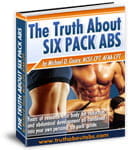

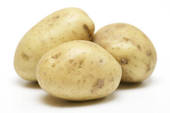
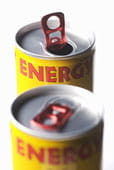 Plus an important lesson on how to help your mind control your exercise and diet results
Plus an important lesson on how to help your mind control your exercise and diet results Did
you know that there are several well known tribes in Africa... the
Masai, Samburu, and Fulani tribes... where their diet consists mostly of
raw (unpasteurized) whole milk, lots of red meat, and cows blood? The
typical members of these tribes eat 5x the average amount of saturated fat compared to overweight, disease-ridden Americans.
Did
you know that there are several well known tribes in Africa... the
Masai, Samburu, and Fulani tribes... where their diet consists mostly of
raw (unpasteurized) whole milk, lots of red meat, and cows blood? The
typical members of these tribes eat 5x the average amount of saturated fat compared to overweight, disease-ridden Americans. 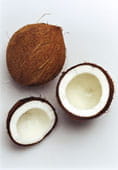 This
is true of certain pacific island countries inhabitants as well.
Several studies have shown that certain pacific island nations had VERY
high intakes of total fat as well as saturated fat from tropical fats
such as palm, coconut, and cocoa. Tropical plants in general have
naturally higher levels of saturated fats in their tissues due to the
warmer climate.
This
is true of certain pacific island countries inhabitants as well.
Several studies have shown that certain pacific island nations had VERY
high intakes of total fat as well as saturated fat from tropical fats
such as palm, coconut, and cocoa. Tropical plants in general have
naturally higher levels of saturated fats in their tissues due to the
warmer climate.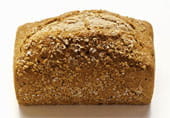 You've
probably heard conflicting opinions out there in the nutrition world if
breads, cereals, and other grain-based foods are good for you or not.
On one hand, you've got the mega-powerful multi-billion
You've
probably heard conflicting opinions out there in the nutrition world if
breads, cereals, and other grain-based foods are good for you or not.
On one hand, you've got the mega-powerful multi-billion 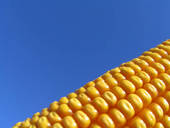 I was reading a statistic in a nutrition book recently, and this is going to shock you...
I was reading a statistic in a nutrition book recently, and this is going to shock you...





